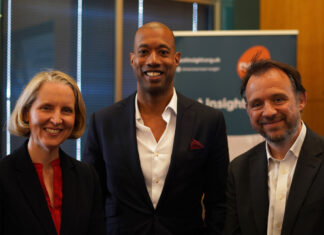It’s difficult to figure out how to even begin discussing a situation that is so wholly outside of our experience. Perhaps the most important thing to say is that I hope everyone reading this is well and finding ways to manage at a personal and family level. Certainly, our primary focus in recent weeks has been supporting the Nest Insight team to transition to the ‘new normal’ of home working, added childcare responsibilities and the many other related challenges we’re all contending with.
Nest Insight is a research organisation focusing primarily on long-term financial security for low- and moderate- income workers. Clearly, this is not a front line activity, and will seem like a low priority to some given the acute short-term health and financial security issues that many people are facing today. And yet, while our work programme will need to adapt and evolve to reflect the new reality, we believe some of our main areas of research are as, or more, relevant than they have ever been.
Short-term financial pressures interact with longer-term financial resilience
We have argued repeatedly that you cannot view retirement saving in isolation from people’s broader household finances. Financial resilience in the short-term feeds directly into financial security in later life. Greater resilience today means that people are more able to maximise their overall earnings capacity, increasing the pool out of which they can save for tomorrow, and better able to withstand financial shocks without having to borrow from their future selves. The link between retirement outcomes and levels of retirement saving is also dependent on broader contextual factors like the amount of debt someone has when they retire or whether they own their own home.
All of this comes into sharp relief right now as some countries are turning to retirement systems and savings as a policy option to help manage people’s income through the current crisis. In the US, early withdrawal penalties on defined contribution (DC) savings have been waived up to $100,000, and in Australia people are now able to withdraw up to AUS$10,000 today and a further AUS$10,000 post July. These moves have been controversial in some quarters, as they risk jeopardising the longer-term financial resilience of individuals and schemes alike. In the UK, savers can only access their pension pots if they’re aged 55 or over – a difference that means we will likely preserve more of our pensions wealth for its intended purpose. But people may nonetheless choose to cease contributions to free up extra cash and, if they do, it may take longer to re-start saving than they originally intended. Employers are also being given longer to prove they are meeting their pension contribution obligations, to support their own liquidity. If ever there was a doubt that short-term financial pressures interact with longer-term financial resilience, that must surely now be put to rest.
Of course, this is a deeper, more acute financial emergency than anyone would have anticipated, and both individuals and policy makers will take the measures they see fit to take to navigate through it. In doing so, some amount of short-termism is probably to be expected. The industry may struggle to argue for the privileged protection of pension saving at all costs. What we absolutely must do is reflect on how people’s finances are really being affected by this crisis. And, we must use that understanding to think about how we can help people to build up accessible savings so we’re better able to withstand financial shocks, and crises like this, without needing to raid the retirement ‘piggy bank’. Otherwise we are storing up problems for the future, for both individuals and whole economies.
These ideas motivate how we’re seeking to evolve our research programme in response to the crisis:
First, seek to understand
Many people will be experiencing dramatic changes in their financial circumstances as a result of the crisis. Unemployment, furloughing on reduced income, loss of self-employed earnings, and loss of investment value, at least in the short-term, will all be affecting different people in different ways. It will be some time before the nature of these effects is truly understood, and we can only play a small part in driving that understanding. But what we can do, we are doing. Our existing research programme gives us some baseline pre-crisis data on retirement savings behaviour and broader financial wellbeing and attitudes. We’ll be working across both administrative and primary qualitative and quantitative data to understand as much as we can about the financial impacts of the crisis. We’ll also be carrying out some innovative data-merge projects with our wide network of research partners to help us share an even broader picture than would otherwise be possible.
Expanding our work on emergency liquidity
One of our flagship projects – our emergency savings or ‘sidecar’ pilot – is all about testing how the structures that have been so effective in increasing pension saving can be harnessed to also help people to build shorter-term financial resilience. Payroll deduction, pre-commitment and the use of inertia combine in this model with the aim of helping people to build emergency savings alongside their retirement savings and, at the same time, to pre-commit to higher retirement saving in the future, once saving for today is in hand.
We believe this kind of hybrid approach can be a central feature of a financial system that helps people build holistic financial resilience for today and in later life. The present crisis absolutely bears out that two-account models have some distinct advantages over allowing people to draw on their retirement savings. Given the asset allocation of a traditional DC fund, anyone withdrawing due to hardship today will be paying a steep premium for doing so given the position of global financial markets. The unexpected nature of the crisis also means that pension plans may struggle to meet the liquidity requirements of a large and sudden withdrawal – this concern has been evident in the response of providers in Australia to the new withdrawal rules. There is also some evidence that when given access to savings meant for a different purpose, there is a self-control or moral licensing effect that leads people to withdraw more than they may actually need, and so the ‘cost’ to people’s future financial resilience of managing the crisis may end up in some cases being higher than it strictly needs to be.
At the same time, the crisis highlights the limitations of the sidecar model. As a voluntary add-on to auto enrolment pension saving, there are both psychological and economic barriers to take-up, with no automatic joining, or employer or government financial contribution, to encourage participation. And this lack of a matching incentive also limits the pace at which balances are likely to grow. Fundamentally, sidecar was conceived of as a route to fund ‘out of pocket’ financial emergencies such as a car repair. It is not designed to enable people to self-insure against more profound economic shocks such as a medium-term loss of income.
The academic paper that led us to think about trialling sidecar actually argues for a three-account model that may better reflect this distinction between different types of emergency liquidity. There are also important questions about the role of self versus traditional insurance for different types of crisis, and the mix of products that might best help people build true resilience. Of course, a big part of that is simply helping people to set enough aside in total to fund multiple goals, including other forms of saving such as for home ownership, and other non-saving challenges such as repaying debts. These have always been areas we wanted to look at as we move through and beyond the current sidecar trial, and we’ll be redoubling our efforts to expand the horizons of this work in the coming months.
The show must go on
At the same time, we don’t want to lose sight of the more ‘business as usual’ aspects of our research agenda. Not everyone will be equally impacted by this crisis. For some, while the social impacts of reduced movement and working from home will be substantial, the economic consequences may be minimal. For them, many of the same questions remain as important today as they were before. If they’re within the auto enrolment framework, are they saving enough for their retirement? If outside the framework, and they are not currently saving for retirement, could and should they be? It’s worth noting that in the expectation markets will eventually return to their pre-crisis levels, now may be a particularly good time for those who can afford it to consider investing more in their retirement accounts.
For these reasons, we will be pressing on with our existing work looking at questions such as how people can best be encouraged to make more active choices about their finances, including pension contribution levels and other forms of short and longer-term saving. Some of our immediate-term plans might change. Overall, however, we feel the best contribution we can make during this period, beyond staying at home and staying safe, is to continue to contribute through our research to a better understanding of financial behaviour and resilience, now and for the longer-term, among the UK’s low and moderate income savers.
Please continue to look out for new work as we publish it, and find ways to engage with us on what we’re finding and how we might continue to shape our future programme. We would welcome ideas for specific research questions or collaborations that we might build into this work. In the meantime, look after yourselves.
Will Sandbrook, Executive Director of Nest Insight







